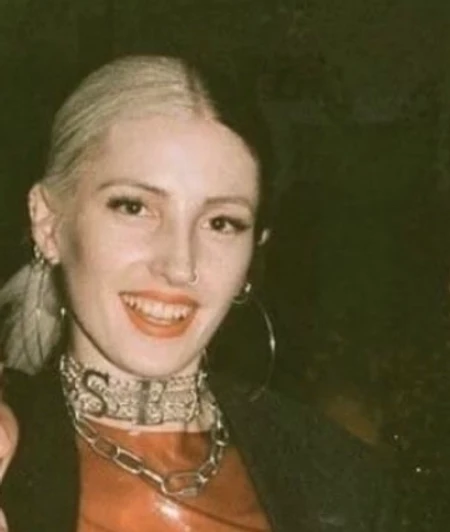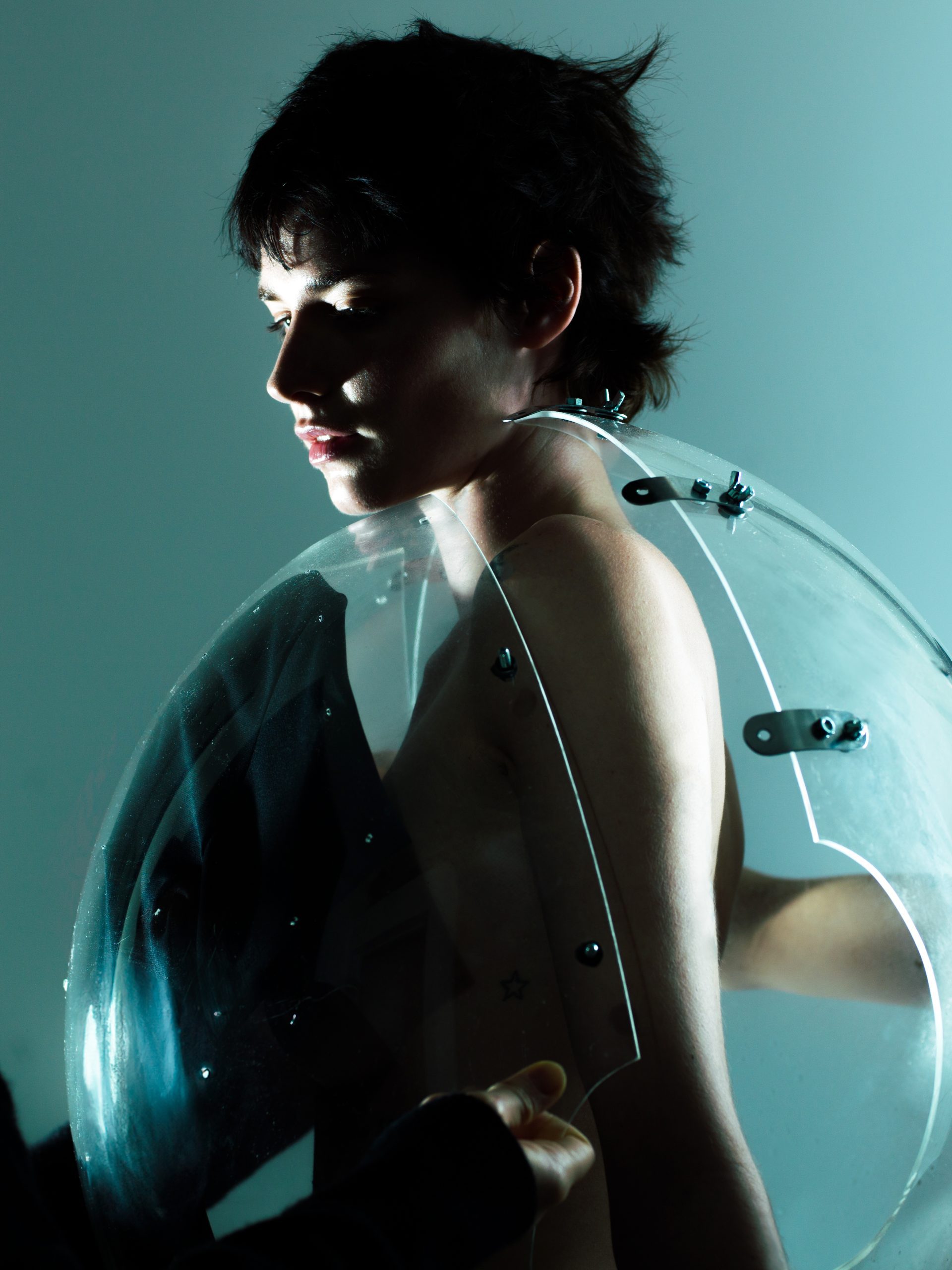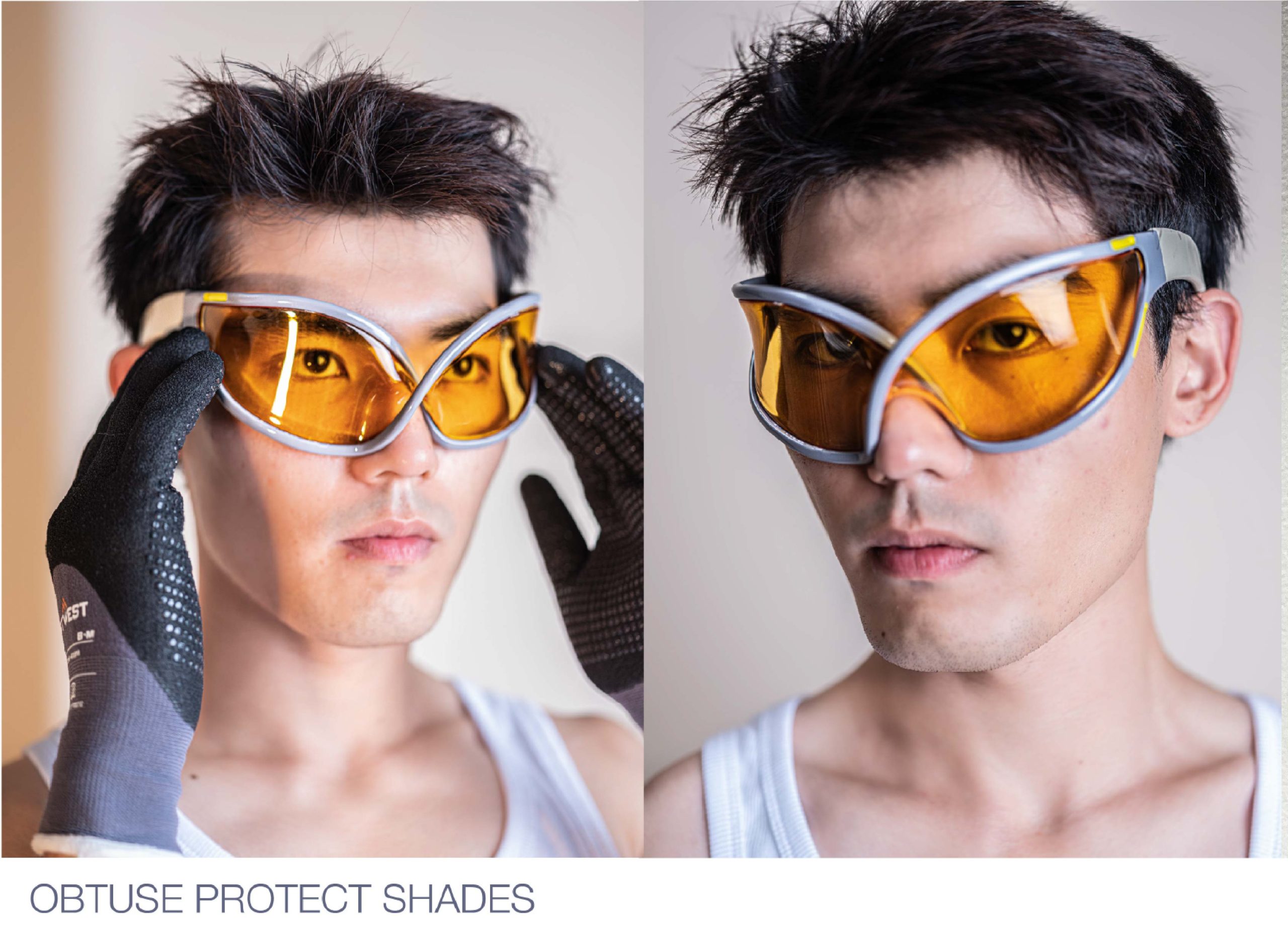Who is Monozygotics?
We desperately want change in the fashion industry, which is why we’ve created Monozygotics, inspired by the scientific term for identical twins. We are on a mission to call out and open a dialogue on the flaws existing within the fashion industry. Although, we created the brand, we are not the only people behind it.

We work with a wide range of like-minded young creatives who are ready to take action into their own hands and challenge conversation around the fashion industry. We have an amazing go to set designer and casting agent Sam Cullis, a wonderful makeup artist Tina Khatri, and other contributors, like illustrators.
We always give them full credit for their skills no matter how small, which may sound like a given, but giving credit where credit is due is an area in which the fashion industry really needs to step up.
What is it like to work with a sibling? Who calls the shots? And what do you each bring to the table that "makes it work"?
Completely by luck, we both studied and work in fashion, but in two separate areas. Scarlet does fashion and costume design, and Daisy does fashion media, including; videography; photography; editing; writing etc.
The dynamic works perfectly, the clothes Scarlet makes would never be noticed if it weren’t for Daisy photography, and whenever Daisy wants to make a video or do a photoshoot, Scarlet will be there to help her execute it. We genuinely couldn’t do it without each other. In terms of who calls the shots, we sort of take turns. One of us will have a question, or an idea, and we will discuss it, explore it further and the execution just follows. We never start out with ‘we want to make a collection’ or ‘we want to make a film’.
For us it is about noticing something we think needs to change, or something we want to question, and then we explore the subject in question. The process is more important than the outcome for us. Monozygotics is not about selling clothes or getting views – it’s about raising important questions and making people think.
What lead you to approach a design career within the fashion sector?
We have very creative parents who always encouraged us to explore all areas of the art industry, so in a sense, it was almost guaranteed that we would follow a creative career. However, the fact that we both pursued Fashion was just a mere coincidence.
As twin sisters in high school we were always confused for one another, people would just refer to us as ‘the twins’ instead of as separate individuals. They would almost assume we were exactly the same. Almost as if they would take it upon themselves to let us know which was the good twin and which was the evil twin, which was the pretty twin and which was the ugly twin, which was the smart twin and which was the dumb one, etc.

So, we feel as if perhaps we jumped headfirst into fashion and beauty due to these constant comparisons – as we were desperate to form our own individualities and be recognised as our own separate people. And course there is no better way to do that than by how you look, as this is what people first see, and first make judgements on. It seems to have become a profession rather than just a hobby once we got a little older, we learnt more about the industry and saw things we didn’t like. Our parents always encouraged us to be very independent and to take action when we were unhappy with something, so as we started to learn more about the fashion industry, we become really disheartened by what we learnt and that’s when we began to see it as a career.
How has your studies impacted your career now? Do you feel more prepared, inspired, to tackle the industry?
In all honesty our internships, and work experience within the industry really taught us more in terms of skills than our studies did. Nothing compares to learning through real-life situations where you have no other option but to figure things out. We both did have some amazing tutors who really gave us confidence and support in what we did, I know had it not been for a couple of my tutors I never would be where I am now.
At University we both learnt a lot about the mindset we needed to have.You learn that some people like your work, some don’t, some understand what you’re saying, some don’t. And that that’s ok.We were both in our final terms when COVID-19 hit and ended up with limited access to university facilities or tutors for our key final months. This was also around the time where we saw a lot of other students expressing their concerns around their accessibility to a fashion show and we realised that creatives shouldn’t expect to have things handed to them, or to allow their work to be disrupted by unexpected events.
In fact we did the opposite – unusual circumstances like this just led to more, unexpected creativity. Resilience is what we learnt at university. Resilience, and only relying on yourself and what you are willing to do – nobody else owes you anything, and complaining won’t solve any problems.
Monozygotics is “Always looking for collaborations and looking to share our ideas and inspirations.” Which has been one of your favourite collaborations to date and why?
Our favourite was a big fundraiser event we put on last year for Greenpeace. We organised an exhibition to showcase the work of many young creatives in London who struggled to find a platform to share their work. The event was themed ‘The Garden of Eden’, so the art works were inspired by nature and produced sustainably. We sold tickets, and clothing from local independent designers, organised DJ sets from talented young people from London and the money raised went to Greenpeace. It was great!
Are you working on a new project?
We are! We have just started a new project about motherhood and technology. Daisy has been doing lots of reading up on feminist theories about motherhood, reproduction, the family and technology. So we are collating some collaborative pieces for a magazine and working on an interactive exhibition which will (hopefully) be finished and for sale (proceeds all going to charity) around the end of July!

Have you made any discoveries as a design brand? i.e. Materials, Techniques, Technology. Consider Sustainability and the future of fashion.
We are always trying to use materials creatively. We have made the ‘discovery’ based on the possibility to create entire collections using only waste materials without creating waste on prototypes. We also discovered that it is possible to do wonderful shoots and films even without expensive professional equipment. We very much believe that if we can do it – others can do it.
What do you think are the biggest challenges for the industry in the years to come and what opportunities can be found from these?
Everything about fashion and beauty needs to change and it needs to change fast. We are running out of time to change the way that we produce and consume before the damage we are doing to the earth cannot be undone. Similarly, with issues such as poor representation of different bodies, different races, different genders, we are at a breaking point and things need to change. We have both learnt however (in a much smaller way when doing our own projects) that when things reach their darkest points and result in urgency, these challenges often create the most creative and raw solutions. Which is what we are doing, and it looks as if others are too.
What role will technology and or sustainability play in this?
We take sustainability very seriously. The majority of all the fabrics we use are recycled or re-worked, we create pieces on a custom order/pre-order basis to avoid over-production, and we make sure to use every last scrap of fabric so make little matching accessories.. whatever we can do. We also try to use technology as innovative as possible – of course lack of budget can be an issue here but we aim to make our work really accessible and avoid all the usual elitism that comes hand in hand with fashion, and using technology is a great way achieve this.
Your brand values say, “we want to change the fashion industry” What do you want to change and how will you do it?
Where do we begin. We all really need the fashion industry to provide complete transparency to customers so that they can make informed decisions about what they buy, so we do this: we say exactly who made the clothes, where they made them, what they’re made from, we breakdown the entire cost so that people see why each garment is that price, we even share lots of BTS footage that shows the less glamorous side of it all such as us working in a tiny dark space, or arguing or getting stressed out.
The fashion industry is one of the only industries where it’s deemed acceptable to make people work insane hours, for free, and then give them no credit for what they do, or even just steal others ideas. So, as a brand, we make sure to tag and mention every person who helps us and even have a dedicated ‘team’ section on our Instagram to share the info of everyone who helps us, no matter how small the role.
We need the industry to be sustainable, which we attempt to combat with our designs by refusing to use anything new as so much already exists and becomes waste.
So we use waste, scraps, dead-stock for garments, and even have started to change our development process so that we don’t make hundreds of toiles and practices that are then thrown away, and instead celebrate stains, rips, or other similar things most would see as an excuse to throw garments away.
We think the Fashion Industry needs to actually step up and help the community, it shouldn’t just be made for the creatives own selfish desire to make something pretty. We don’t need more materialistic things to be made for no necessary purpose. Everything should be made to explore topics that we feel need to be discussed, or to get across a message, or to support the community. So we make sure we are doing this – and from every project or product we create, we pick a charity relevant to the areas we have explored, and donate part of the profit to it. Etc.
We aren’t necessarily saying that everything we think is right, but that’s not the point, regardless of whether people agree or disagree with what we say, the whole idea is to get people thinking independently, questioning things, making their actions meaningful, and actually having a conversation about these things.




